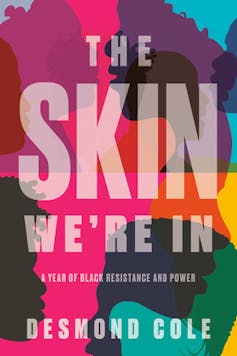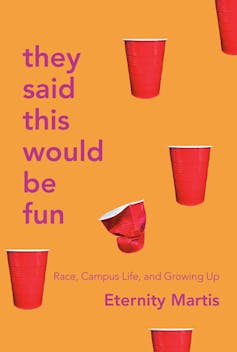We all lose from anti-Black racism on Canadian university campuses
Two books published this year explore how anti-Blackness on Canadian university campuses shapes higher education for Black students.

Two books published this year explore how anti-Blackness on Canadian university campuses shapes higher education for Black students.

I attended Western University in the early 2000s with a cohort of first-generation Black Canadian friends from my high school in Ajax, Ont. At Western, we became active in the Black Student Association (BSA). The BSA pushed the department of English to offer a course on African American literature. They were reportedly told by the reigning chair that there was no need to do so since there were so few Black students on campus. (Ironically, “Major in yourself” was the university’s main marketing slogan at the time).
Black Canadian literature dates back to the late 18th century, as do critiques of Canadian racism. In this moment, prominent young Black Canadian writers and activists, emerging from a white supremacist Canadian university system, are writing and speaking openly about the ways their experiences in higher education have shaped their activism. Two recently published memoirs by Black Canadian writers, look at racism on campus and critique systemic racism, anti-Blackness and police brutality in Canada.
Desmond Cole’s The Skin We’re In includes a vignette from his time at Queen’s University. In it, Cole remembers being stopped by two police officers late one evening while taking his usual shortcut across campus:
The cops left me waiting in the glare of their headlights as they presumably ran my name through their computer. I was so afraid. I thought about screaming for help if anything happened – I feared no one would hear me. One of the officers finally returned with my ID, and when I asked him why he’d stopped me, he casually offered that there’d been some ‘suspicious activity in the area.’ Over the course of the next few years, I would be stopped or followed dozens of times by the police in Kingston and Toronto ….

That Black people in Kingston are 2.5 times more likely to be stopped by the Kingston Police Department without cause is no secret, nor is their connection to Queen’s University. The KPD’s discriminatory conduct has made national headlines in the past and is the subject of academic research.
The problem of anti-Black racism on campus is certainly not limited to Queen’s University. But as Desmond Cole’s work shows, on elite Canadian university campuses even the best, brightest and most gifted Black Canadian students are subject to discriminatory treatment, which can change the trajectory of their lives, or stop it altogether. Canadian politeness and middle-class respectability cannot save Black students and it is a shocking revelation to some.
No less chilling are the experiences of journalist Eternity Martis. In her searing memoir, They Said This Would Be Fun: Race, Campus Life, and Growing Up, the writer depicts London, Ont., where Western University is based, and elite Canadian spaces like it as terrifying sites of racial aggression where white privilege runs unchecked and young Black students are left to fend for themselves.

While on campus, Martis experiences a vicious racist verbal assault and in reporting to campus security is told, that despite the schools’s zero-tolerance policy for discrimination, there are no cameras witnessing the event so there will be no follow up. When she asks what happens if the attacker repeats his act again, she is told, “Well, hopefully, someone will report it and we’ll be able to get him then.”
As she writes:
I thought about the surveillance around the campus. How could there be no cameras in one of the busiest areas? Worse, how could an incident of this magnitude be dropped just like that, only to let it happen to another person? By then I had experienced a host of issues in the city and on campus that I’d handled myself, even when the weight of carrying it alone felt enormous. The one time I had asked for help, nothing could be done.
Martis’s experiences are anything but isolated. This year, a seemingly similar process played out on the campus where I work. While Indigenous students were the target of racial violence in their residence hall, a hall that has been plagued with similar problems in the past, no guilty parties were ever able to be identified or held responsible. Theorist Simone Browne might say that one of the reasons for this lack of efficacy in terms of protecting Black and Indigenous students is that campus security surveillance, like all police mechanisms, was never meant to factor the need to protect students who are not white.
Black students were at the heart of some of the most successful Black Lives Matter–Toronto demonstrations and organizing.
In Until We Are Free, BLM Toronto co-founders Sandy Hudson and Rodney Diverlus explain that “The Black Lives Matter–Toronto Freedom School and the Canadian Freedom Intensive are two of our most important initiatives aimed at combating the absence of Blackness in traditional education; providing affirming, queer-positive education for our young people; providing an avenue for children to be involved in the movement and providing political education to adults.”
In the aftermath of the killing of George Floyd and protests on police violence, Black reading lists in Canada have proliferated along with the explosion of the Twitter hashtag #BlackintheIvory. Ostensibly, there is no Ivy League in Canada but we still have much to learn about systemic racism in academia.
Some contemporary Black Canadian writers come to understand their experience in higher education as part of a continuum of racist violence and systemic racism. That does not end with Martis and Cole or at the university gates.
Canadian universities are sites of civic education and social reproduction. Ultimately, we rob ourselves and Black communities when we rob Black students of their humanity.![]()
Kristin Moriah, Assistant Professor of African American Literary Studies, Queen’s University, Ontario
This article is republished from The Conversation under a Creative Commons license. Read the original article.

SUPPORT WE REP STEM AND HELP US CREATE MORE RAD CONTENT.
